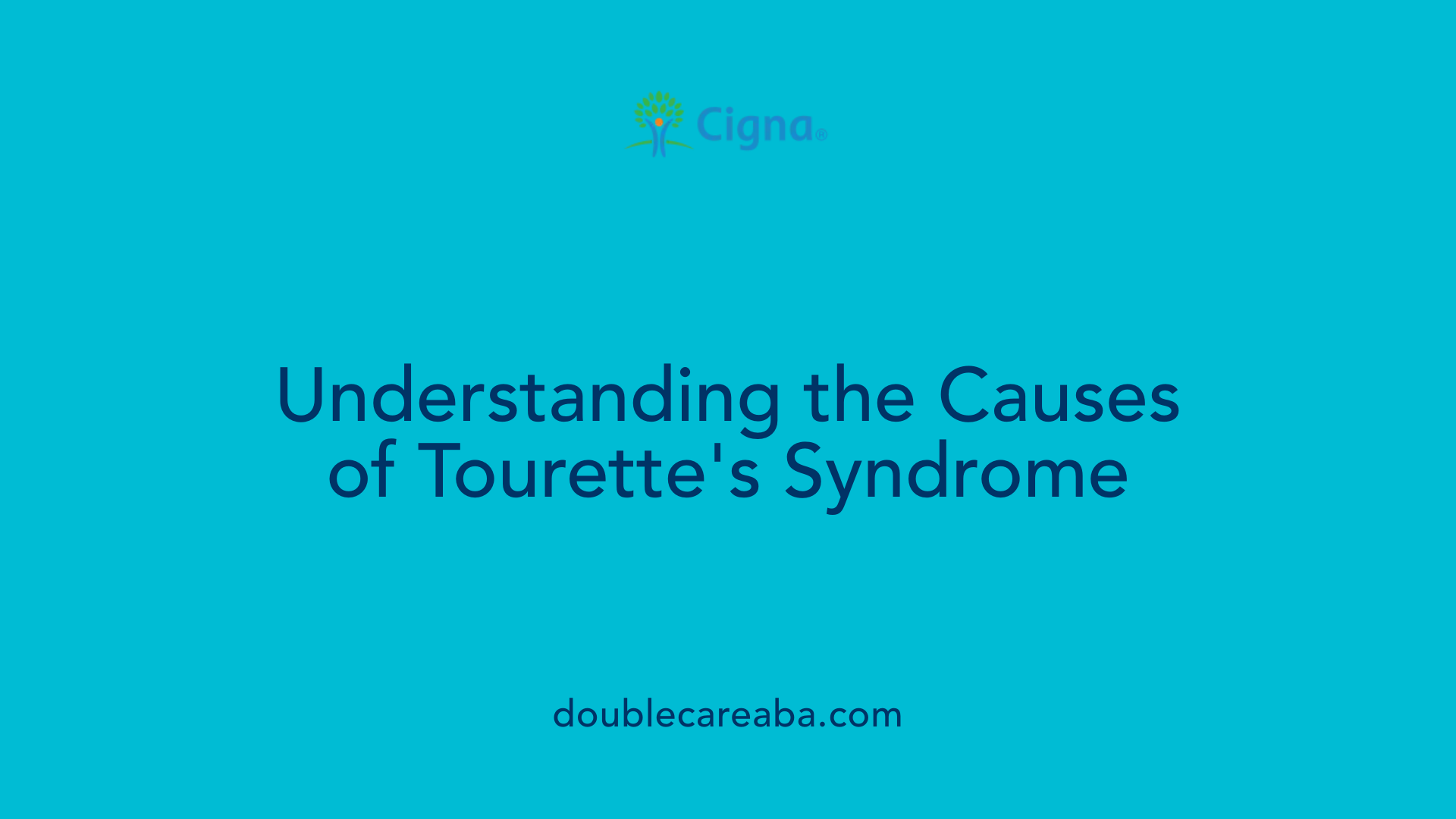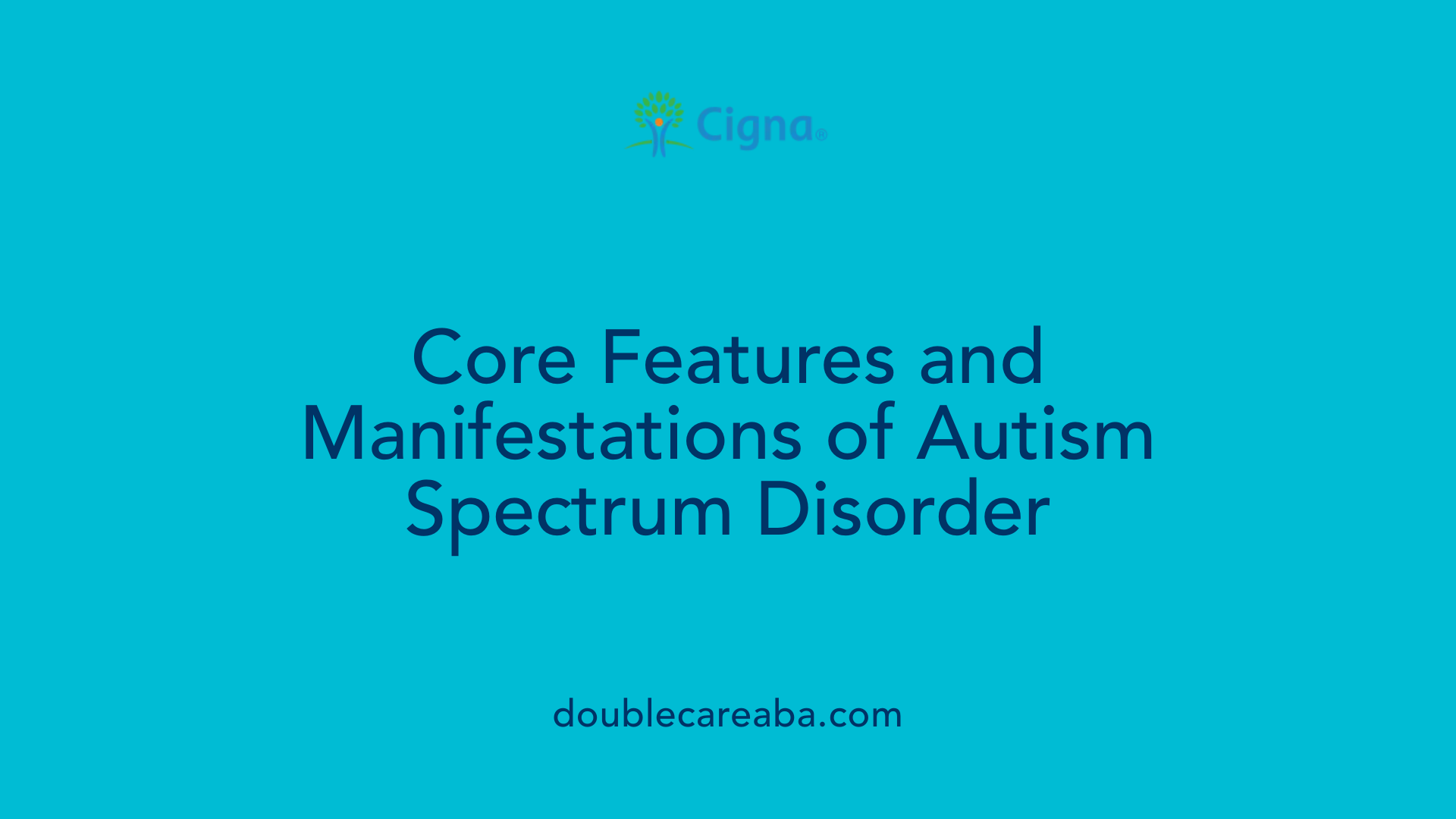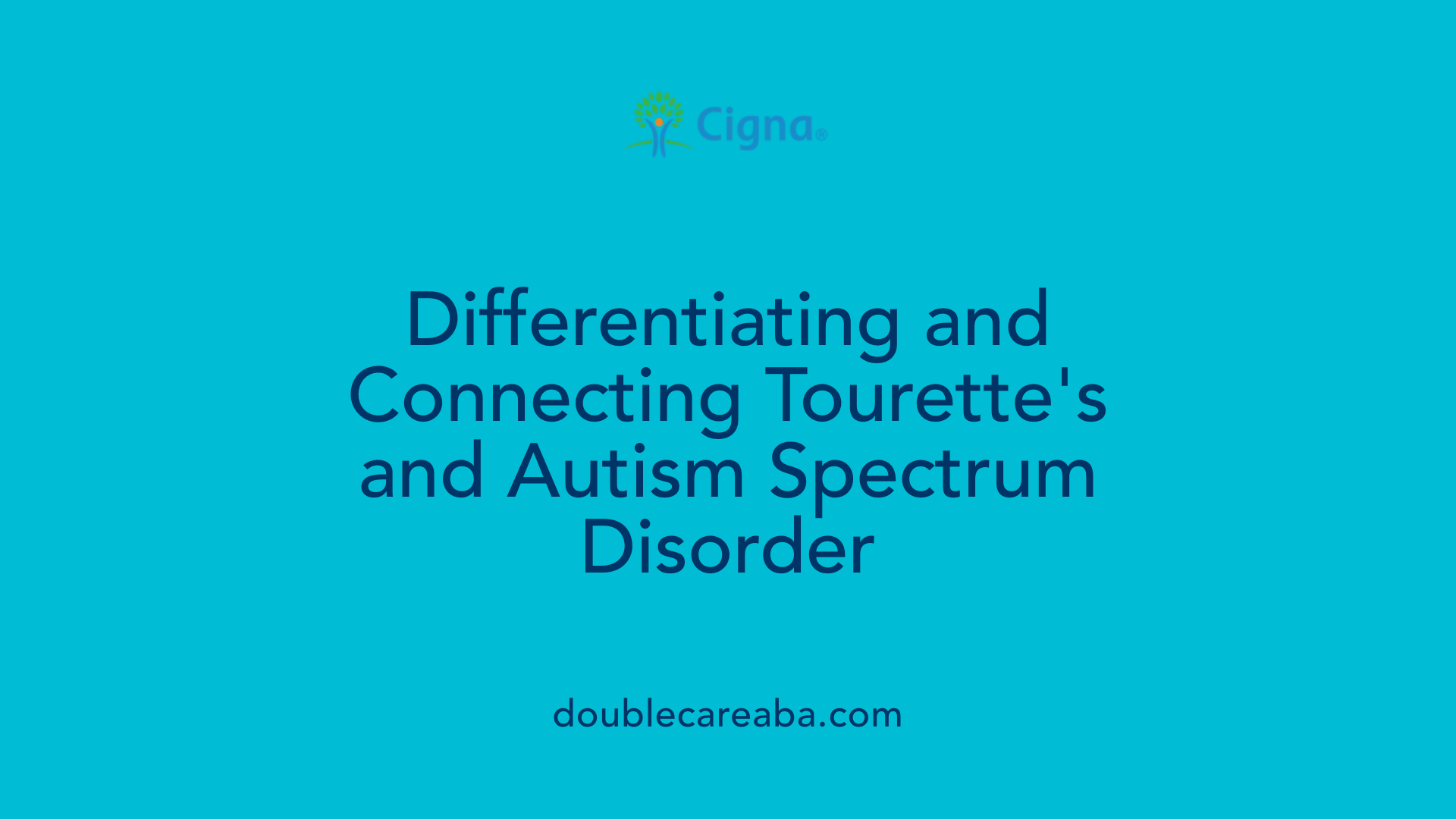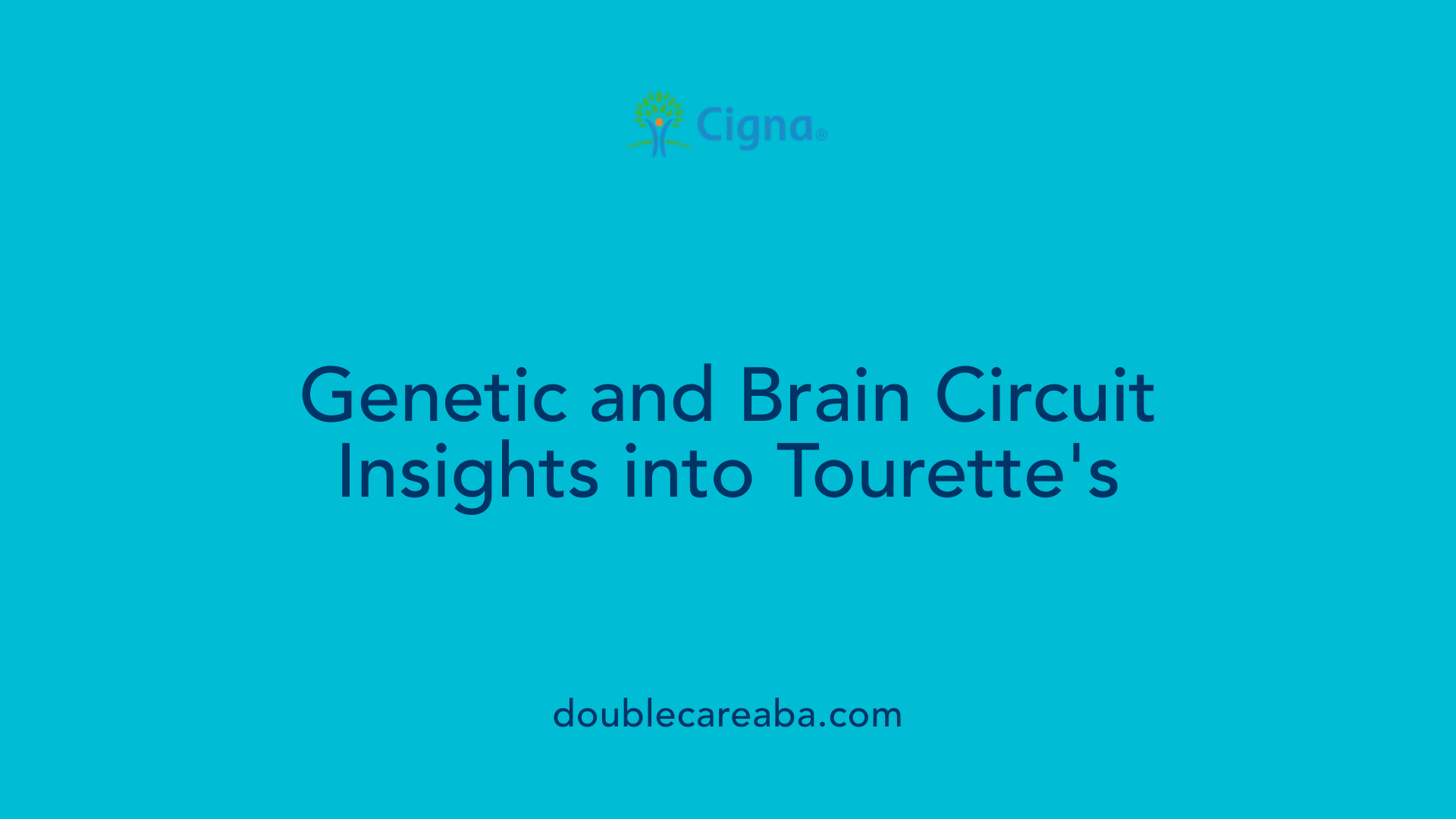Exploring the Complex Relationship Between Two Neurodevelopmental Conditions
Tourette's Syndrome (TS) and Autism Spectrum Disorder (ASD) are both childhood-onset neurodevelopmental disorders that often manifest in males. Despite some overlapping symptoms, particularly related to repetitive behaviors, they are distinct conditions with unique features, causes, and diagnostic criteria. This article seeks to clarify whether TS is a form of autism by examining their similarities, differences, comorbidities, and underlying neurobiological mechanisms.
Fundamentals of Tourette’s Syndrome

What is the cause of Tourette's syndrome?
The exact origins of Tourette's syndrome (TS) are not fully understood. It is widely recognized as a neurodevelopmental disorder driven by a combination of genetic and environmental factors. Research shows that genetics play a significant role, with TS often running in families and affecting males more frequently than females.
Neurologically, TS involves dysfunction in brain circuits connecting the basal ganglia, cortex, and related structures. These areas are crucial for coordinating movement and behavior. Imbalances in neurotransmitters such as dopamine and serotonin are also believed to contribute to the symptoms.
Environmental factors like stress, illness, or heightened emotional states can influence the severity or frequency of tics but are not the root cause. Overall, TS results from complex interactions among multiple genetic variants and brain mechanisms rather than a single cause.
Do people with Tourette's know what they are saying?
Individuals with Tourette's syndrome are generally aware of their thoughts and actions. Their tics—whether motor or vocal—are involuntary, meaning they cannot consciously control them. Despite knowing what they are about to do or say, they often cannot prevent or suppress these urges.
Trying to suppress tics can sometimes lead to increased stress or a buildup of tension, which may exacerbate the symptoms. Many people recognize the premonitory urges—physical sensations that often precede tics—that signal an impending tic.
Although tics are involuntary, awareness of their presence is common, and this understanding can vary among individuals. Overall, the condition is neurological rather than behavioral, and people with TS do not produce tics intentionally.
Who is affected and how common is TS?
Tourette's syndrome affects about 1 in 100 children, making it a relatively common neurodevelopmental disorder. It is considerably more prevalent in males, with a ratio of approximately 3 males to 1 female.
TS often begins in childhood, typically around ages 6 or 7, with symptoms like involuntary movements and sounds that can vary in severity. Many children see a reduction in these symptoms as they grow older, especially into adulthood. However, about half of those diagnosed continue to experience symptoms throughout their lives.
The disorder is often misunderstood, with misconceptions such as all individuals with TS swearing, which is only true for about 15-20% of cases. Recognizing these demographics and the commonality of the condition underscores the importance of awareness and support.
| Aspect | Details | Additional Notes |
|---|---|---|
| Prevalence | 1 in 100 children | Affecting both genders but more common in boys |
| Age of Onset | Around 6-7 years | Usually begins in childhood |
| Gender Ratio | 3:1 male to female | Males more frequently affected |
| Symptom Trends | Often lessen in adulthood | About 50% live with lifelong symptoms |
| Common Misconceptions | All people with TS swear | Only 15-20% exhibit coprolalia |
Understanding these fundamentals helps to foster better awareness and reduces misconceptions, promoting more effective support for those affected.
The Core Features of Autism Spectrum Disorder

How do tics manifest in individuals with autism?
Tics in individuals with autism spectrum disorder (ASD) manifest as brief, rapid, and involuntary movements or sounds. These can be motor tics, such as eye blinking, facial grimacing, head jerking, and hand movements. Vocal tics might include throat clearing, grunting, or echolalia—the involuntary repetition of words or phrases. The complexity of tics varies from simple, repetitive actions to more coordinated and elaborate sequences like jumping or twisting.
These symptoms are often fluctuating; they can worsen with stress or sensory overload, and tend to lessen over time for some individuals. Unlike voluntary behaviors like stimming, tics are involuntary and often occur with a premonitory urge—a sensory sensation that precedes the movement or sound. Many individuals are unaware of their tics, which can sometimes be mistaken for purposeful actions.
Recognizing the difference between tics and stereotypies or other repetitive behaviors is important for accurate diagnosis and support. Tics are generally brief, sudden, and less rhythmic than typical repetitive behaviors seen in autism, emphasizing the importance of tailored approaches to treatment and management.
Is Tourette's syndrome considered a form of autism?
Tourette's syndrome (TS) is a distinct neurodevelopmental condition characterized mainly by involuntary motor and vocal tics. It differs fundamentally from autism spectrum disorder (ASD), which involves challenges in social communication and the presence of stereotyped behaviors or stimming.
While both conditions are neurodevelopmental and primarily affect children, they have separate diagnostic criteria. TS usually begins around age six, with tics that are brief and often preceded by sensory premonitory urges. In contrast, stereotypies in autism often appear earlier and tend to be rhythmic or purposeful.
However, there is a significant overlap. Research indicates about 21% of children with autism may also have Tourette's, and both conditions are more common in males. Despite this, TS is not considered a subtype of autism nor a manifestation of it. Instead, the two conditions sometimes co-occur, sharing some behavioral features but requiring different approaches to treatment and support.
Understanding the distinctions helps in providing appropriate interventions for each condition while acknowledging their potential to exist simultaneously.
Overlap and Distinction: TS and ASD

What are the differences and similarities between Tourette's Syndrome and Autism Spectrum Disorder?
Tourette's Syndrome (TS) and Autism Spectrum Disorder (ASD) are both neurodevelopmental conditions that often start in childhood and predominantly affect males. Despite sharing certain features, they have distinct core characteristics.
TS is primarily marked by motor and vocal tics—brief, sudden, repetitive movements or sounds such as eye blinking, facial grimacing, or sounds like grunting and sniffing. Some individuals experience coprolalia, which involves involuntary swearing. These tics are involuntary, often preceded by premonitory urges, and tend to decrease with age, sometimes resolving entirely in adulthood.
On the other hand, ASD involves challenges in social communication and restricted behaviors. Common signs include difficulty in interacting socially, language impairments, and repetitive behaviors known as stereotypies or stimming, which are rhythmic and purposeful.
Both conditions can involve repetitive behaviors and sensory sensitivities. In fact, research shows that up to 22% of children with TS also meet criteria for ASD. Genetic studies suggest that shared genetic variants could influence both disorders, as well as related ones like ADHD and OCD, pointing toward overlapping neurobiological pathways.
While some signs overlap, the methods of behavior, onset age, and underlying neurobiology differ markedly. Recognizing these differences alongside shared features is crucial for accurate diagnosis and tailored interventions.
Is Tourette's syndrome considered a form of autism?
Tourette's syndrome is not classified as a form of autism, though they can co-occur. TS involves involuntary motor and vocal tics that are brief and often preceded by sensory urges, typically beginning around age six. These tics are involuntary and can range from simple movements like eye blinking to complex behaviors like jumping.
ASD, in contrast, is characterized by difficulties in social communication and the presence of restricted, repetitive behaviors. These behaviors, such as hand-flapping or rocking, are rhythmic and purposeful, often manifesting earlier than tics.
Despite these differences, overlap exists; about 21%-22% of children with TS also meet the diagnostic criteria for autism, especially when repetitive behaviors and social communication challenges are considered. Some behaviors in TS and ASD can appear similar, and their coexistence suggests shared genetic or neurological influences.
Nevertheless, they are distinct disorders with separate treatment pathways. Understanding their overlap helps in providing comprehensive support for individuals with comorbid conditions.
Genetic and Neurobiological Perspectives

What is the cause of Tourette's syndrome?
The exact cause of Tourette's syndrome (TS) still remains unknown. However, it is understood to arise from a combination of genetic and environmental factors. Family studies show that TS often runs in families, suggesting a strong genetic component, especially since males are more frequently affected. Neurological factors also play a vital role, involving abnormalities in brain areas responsible for movement regulation.
Imbalances in neurotransmitters such as dopamine and serotonin are believed to influence the severity and occurrence of tics. Environmental triggers like stress, illness, or hormonal changes, such as puberty, can exacerbate symptoms. Overall, TS is a complex neurodevelopmental disorder caused by multiple interacting factors rather than a single identifiable cause.
Are there genetic overlaps between TS and ASD?
Research points to alarming overlaps in the genetic makeup of TS and autism spectrum disorder (ASD). Specific regions of the genome and numerous genes show variants linked to all three conditions—autism, ADHD, and TS. Scientists have identified seven genomic regions and 18 genes that harbor these variants, most of which are highly active in brain areas involved in stress regulation and neural signaling.
This genetic intersection indicates that shared pathways influence how our brains develop and function, potentially leading to overlapping behaviors and symptoms across these conditions. Recognizing these genetic overlaps underscores the intricate genetic architecture and helps explain why TS and ASD sometimes co-occur.
How do brain circuit dysfunctions relate to TS and ASD?
Both TS and ASD involve dysfunctions in similar neural circuits, especially the cortico-striato-thalamo-cortical pathways. These circuits are critical for controlling movement, behavior, and complex cognitive functions.
In TS, disruptions in these pathways cause involuntary motor and vocal tics. In ASD, similar dysfunctions are linked to difficulties with social interaction and repetitive behaviors. Despite involving similar circuits, the specific regions affected vary, accounting for the differences in symptoms.
Genetic mutations impacting these circuits may contribute to both disorders, revealing a shared neurobiological foundation. This overlap emphasizes how alterations in brain pathways can manifest as diverse neurodevelopmental conditions, influencing our understanding and potential treatment targets.
| Aspect | Involvement in TS and ASD | Brain Regions Affected | Implications |
|---|---|---|---|
| Genetic Factors | Variants in 18 genes across 7 genomic regions | Genes highly expressed in hypothalamus, pituitary, adrenal glands | Shared genetic pathways can lead to overlapping features |
| Neurocircuitry | Dysfunction in cortico-striato-thalamo-cortical circuits | Basal ganglia, cortex, thalamus | Common circuits underpin movement and behavior regulation |
| Symptoms and Features | Motor and vocal tics, social communication deficits, repetitive behaviors | Specific pathways within these circuits | Different presentations but interconnected neurobiology |
Understanding these overlapping genetic and neurobiological factors offers valuable insights into the shared mechanisms underlying TS and ASD. It also emphasizes the importance of comprehensive assessment and personalized approaches for individuals affected by these conditions.
Development, Life Course, and Treatment Implications

When do tics start, and how do they evolve over time?
Most children with Tourette syndrome begin showing tics around ages 6 or 7. Initially, these can consist of simple movements like eye blinking, facial grimacing, or throat clearing. As children grow, the severity and complexity of tics can increase, peaking between ages 8 and 12. Many children experience a natural decline in tics during adolescence, with about half becoming tic-free by age 18.
In some cases, tics persist throughout adulthood, but they often become less severe and less noticeable over time. Hormonal changes, stress, and environmental triggers can influence tic fluctuations. While tics may decrease, they can resurface or worsen during hormonal periods such as puberty or menopause.
How do tics change with age and puberty?
As individuals age, many notice a reduction in the frequency and intensity of their tics. Puberty can sometimes exacerbate symptoms due to hormonal fluctuations and increased stress levels. For some, tics diminish enough to be barely noticeable, allowing improved daily functioning.
However, about 50% of those with TS continue to experience symptoms into adulthood. The clinical management across the lifespan often involves behavioral therapies, medication, and support strategies tailored to the individual's age and disability level.
What are the approaches to treating and managing TS?
Effective management of Tourette syndrome combines behavioral therapies, medication, and supportive interventions. Habit reversal training (HRT) and comprehensive behavioral intervention for tics (CBIT) are common behavioral approaches.
Medications may include antipsychotics, alpha-agonists, and other agents to reduce tic severity. Each treatment is personalized based on the type and impact of tics, the individual’s age, and any co-occurring conditions like ADHD or OCD.
Creating an environment of understanding and support is crucial. Education about the involuntary nature of tics helps reduce stigma. Early diagnosis and intervention can greatly improve coping abilities and quality of life.
How do Tourette's syndrome and autism-related behaviors compare?
Tics in Tourette's are involuntary actions that individuals often find difficult to suppress and are accompanied by premonitory urges. In contrast, behaviors like hand-flapping or rocking seen in autism are voluntary self-stimulatory actions performed to regulate sensory input or emotional state. These repetitive behaviors in autism, termed stimming, are usually rhythmic and patterned, often beginning early in development.
Understanding these differences is essential for appropriate support, as tics tend to wax and wane, while stimming behaviors are more sustained and intentional. Recognizing this distinction helps in accurate assessment and intervention planning for those with either or both conditions.
Clarifying the Relationship and Distinctions
In conclusion, Tourette's Syndrome and Autism Spectrum Disorder are separate neurodevelopmental conditions with unique features, although they can co-occur and share some overlapping symptoms such as repetitive behaviors. TS is characterized by involuntary tics that typically manifest in childhood and tend to decrease with age, whereas ASD encompasses social communication challenges and stereotypies that are often purposeful. While genetic and neurobiological overlaps exist, particularly involving neural circuits and genetic variants, current evidence does not support the categorization of TS as a form of autism. Understanding the distinctions and interrelations is crucial for accurate diagnosis, tailored interventions, and improved support for individuals affected by these complex conditions.
References
- [PDF] Differences and similarities of ASD and Tourette Syndrome
- Autism and Tourettes: What are the Differences?
- Autism Spectrum Symptoms in a Tourette Syndrome Sample - PMC
- Common variants link autism, ADHD, Tourette syndrome
- Elevated Rate of Autism Symptoms Found in Children with Tourette ...
- Tourette syndrome - Wikipedia
- Are Tourette's Syndrome and Asperger's Syndrome Related? - NJCTS
- Tourette Syndrome Is (Almost) As Prevalent As Autism - Forbes















